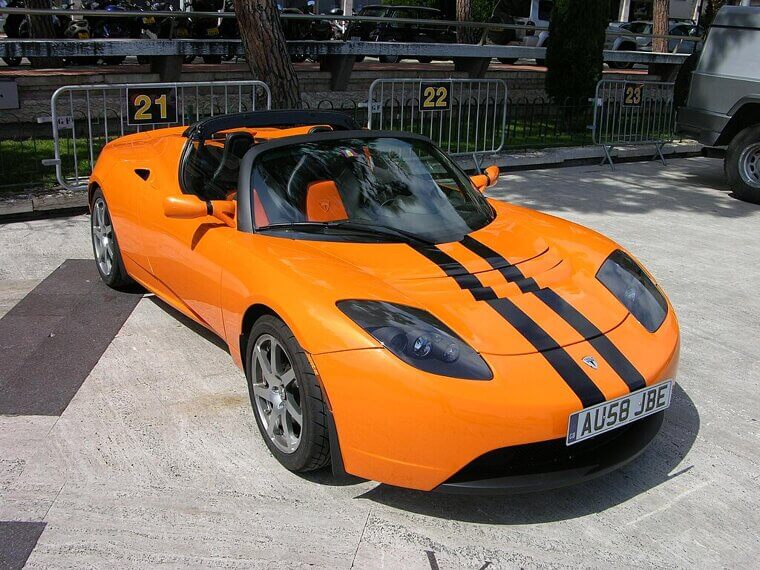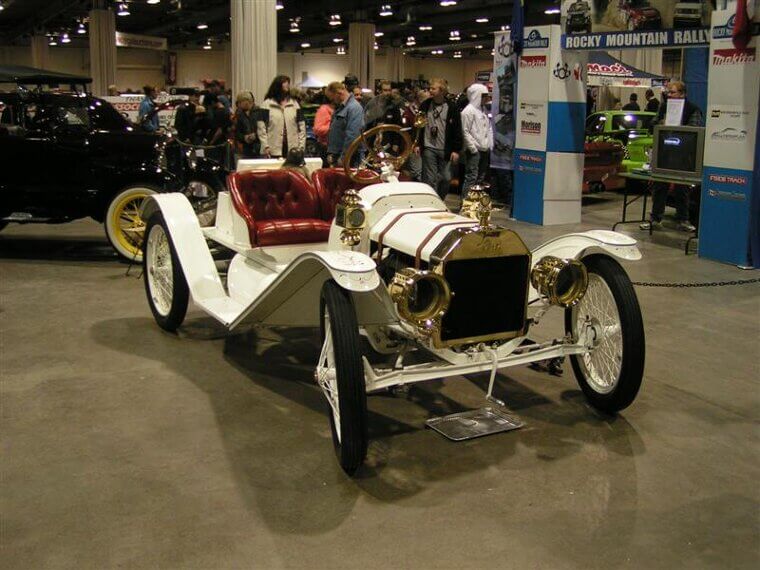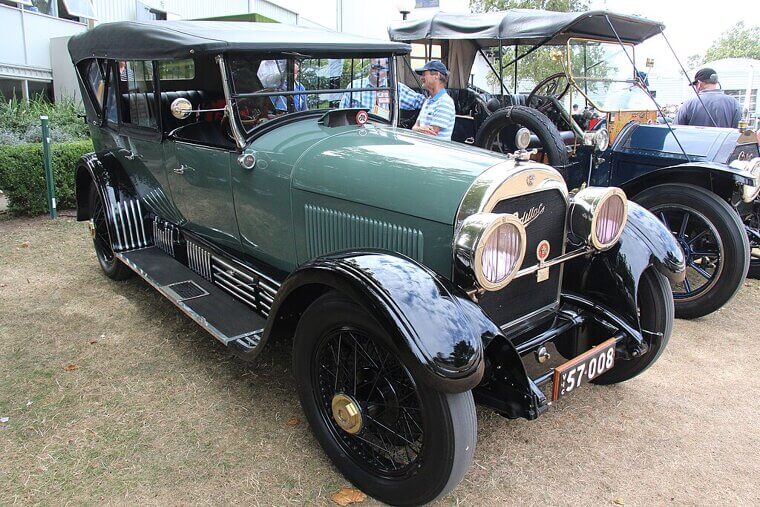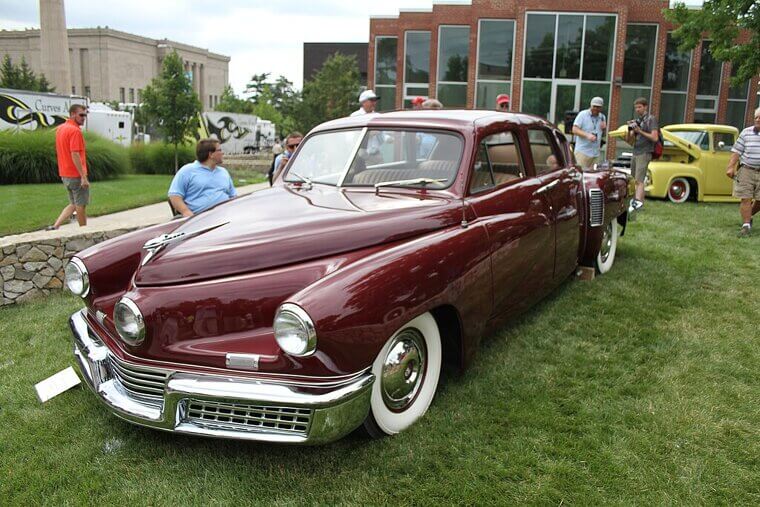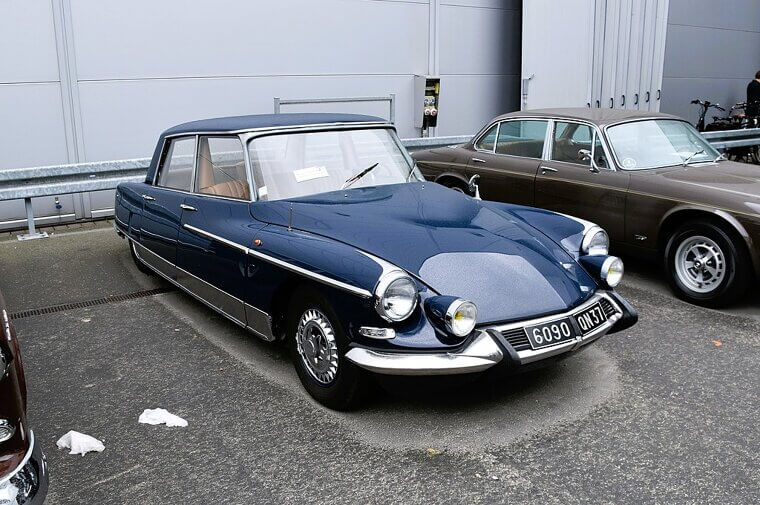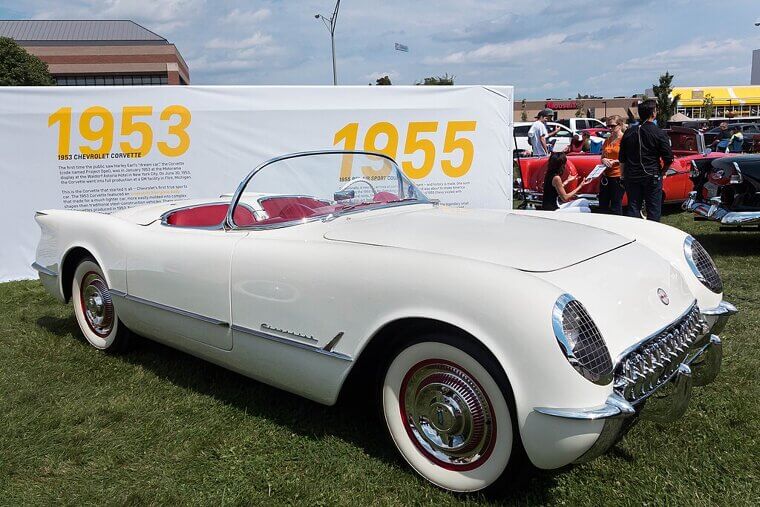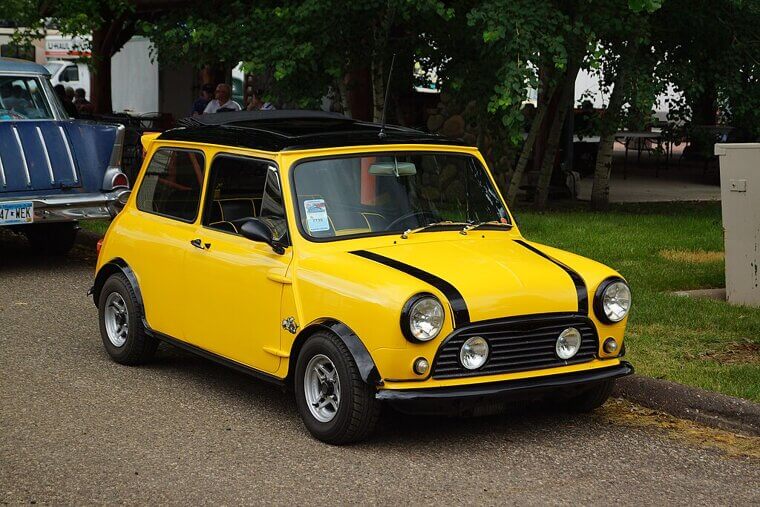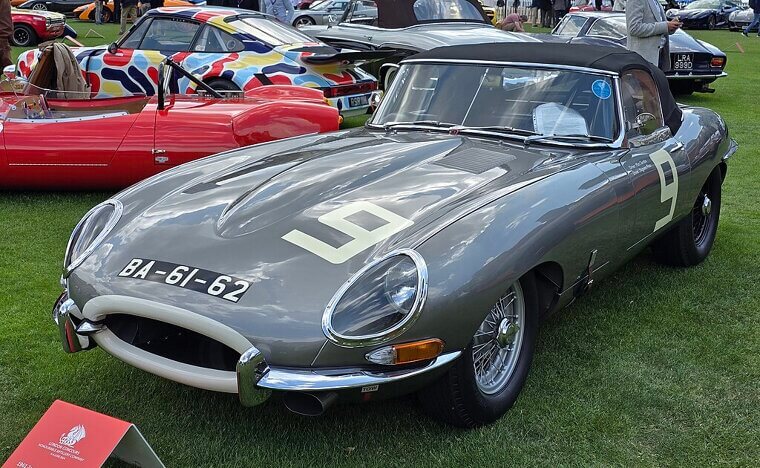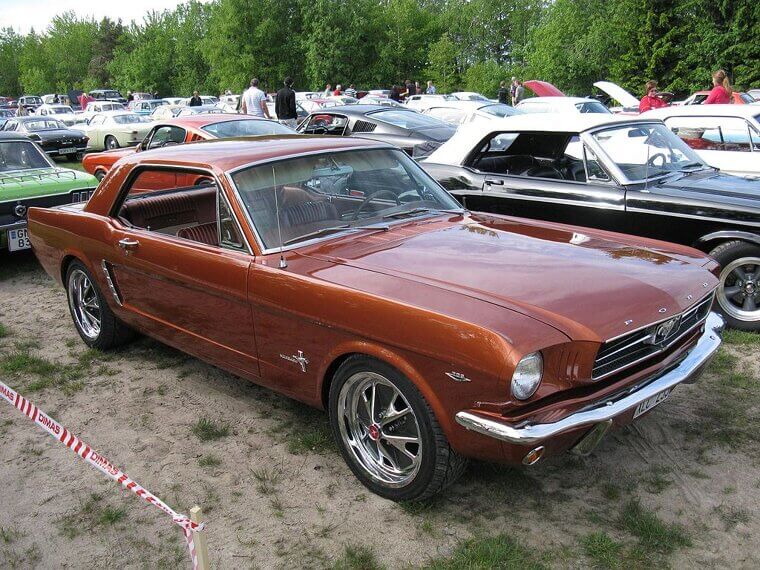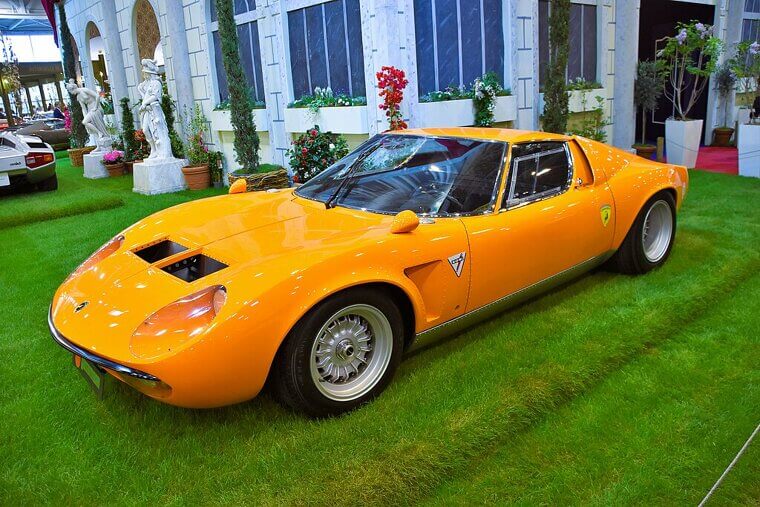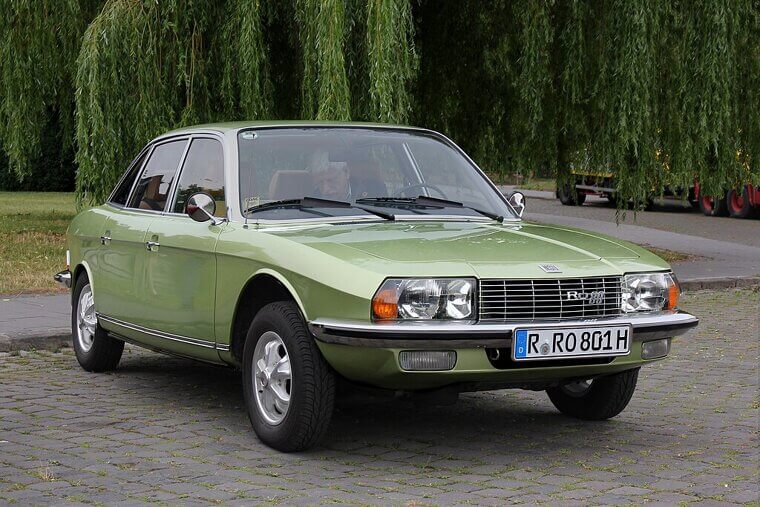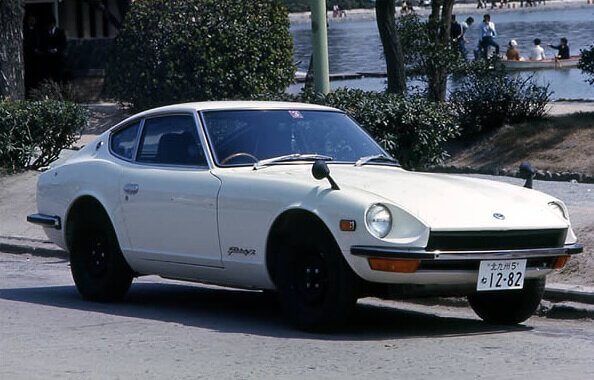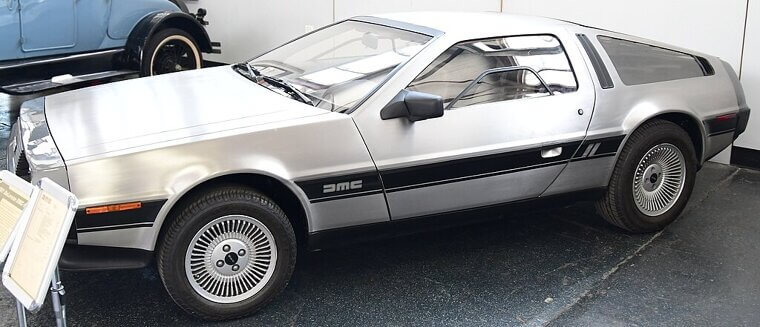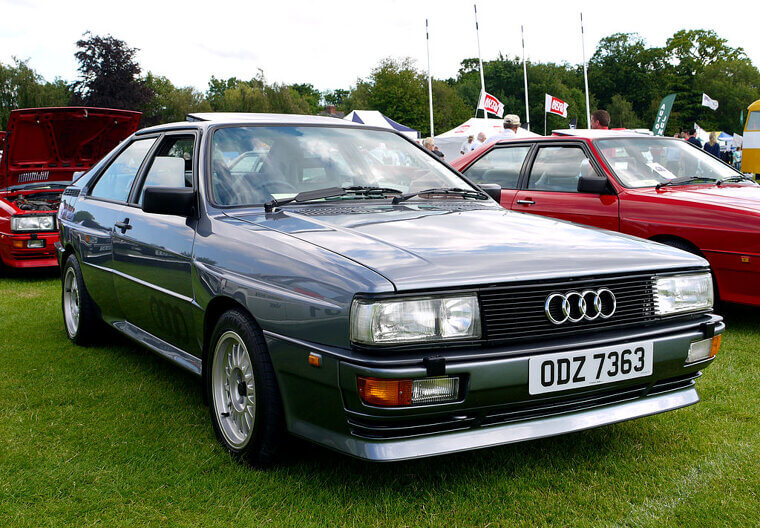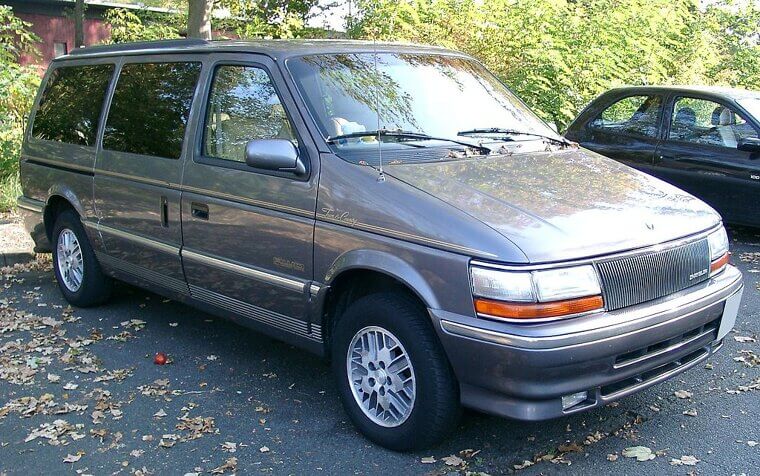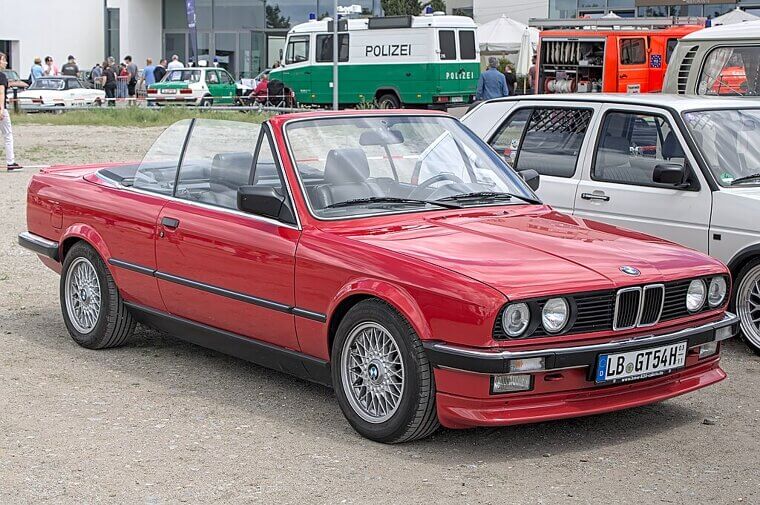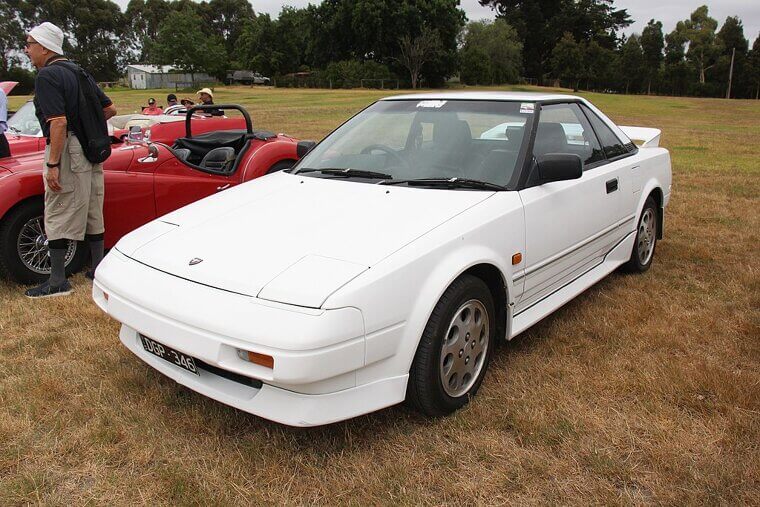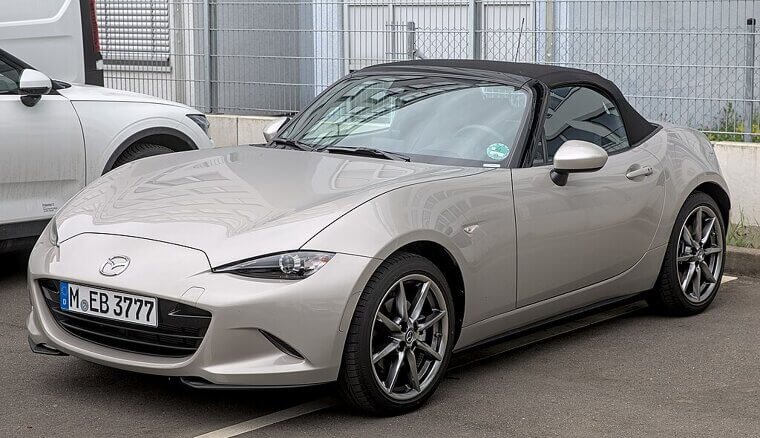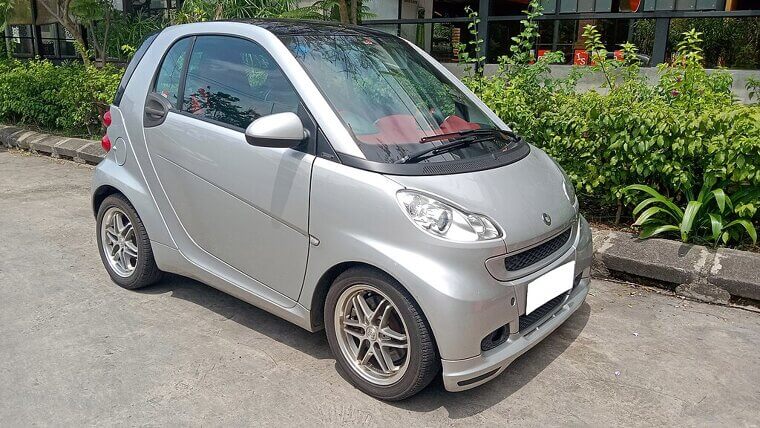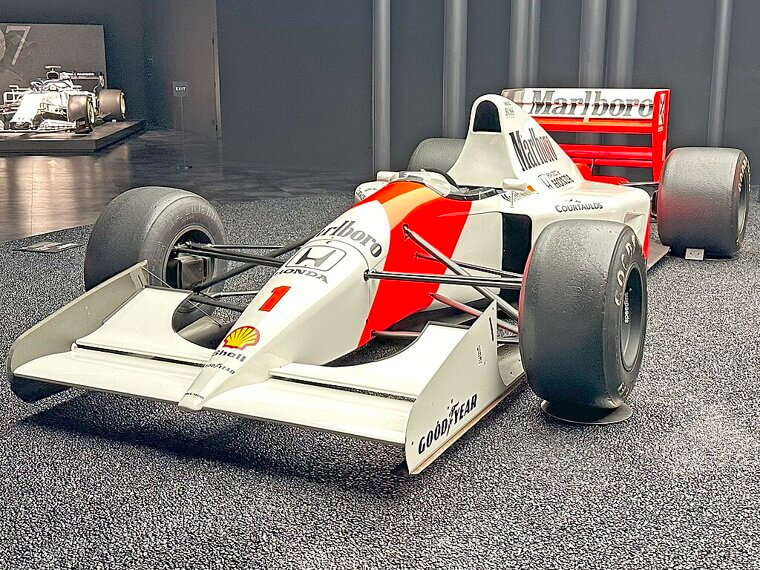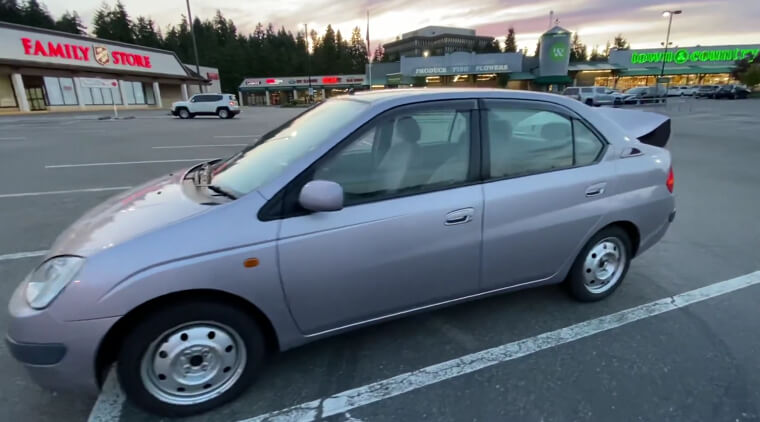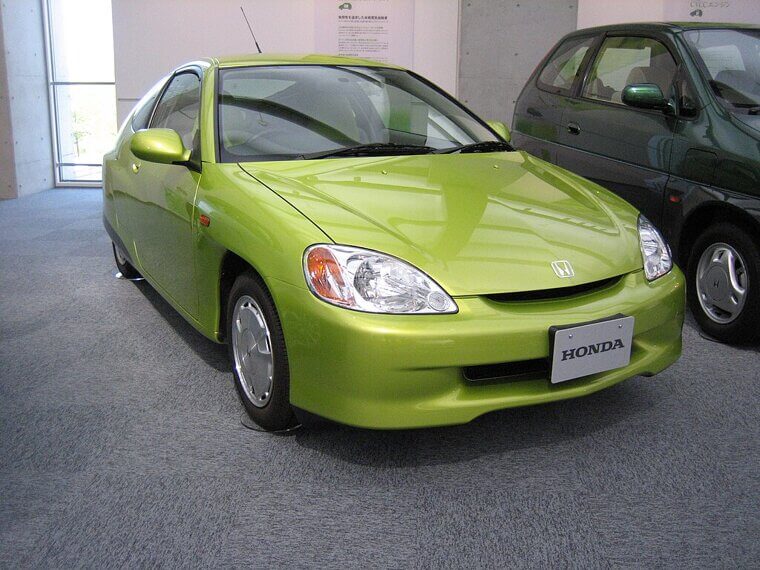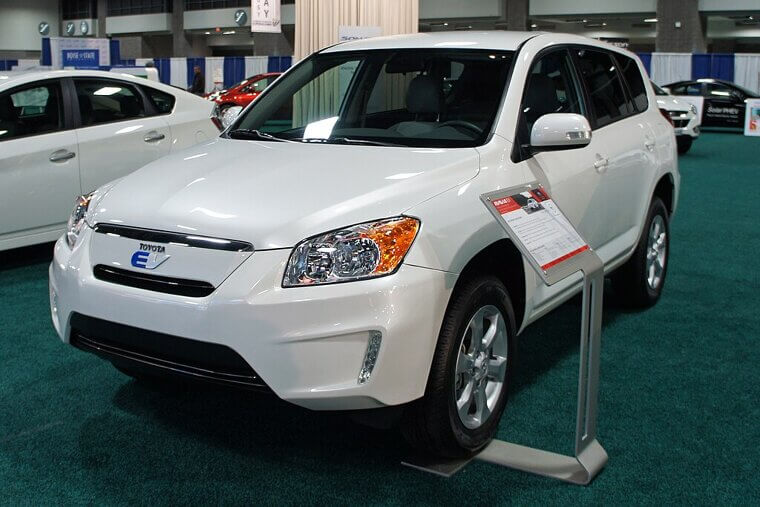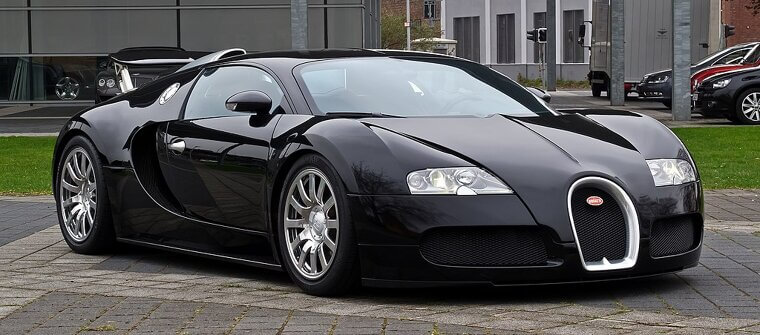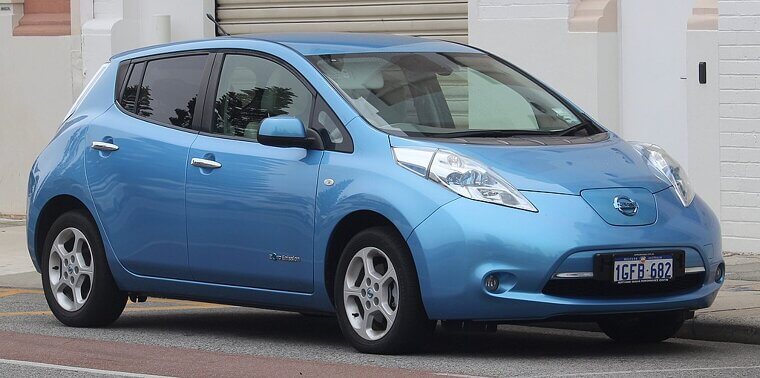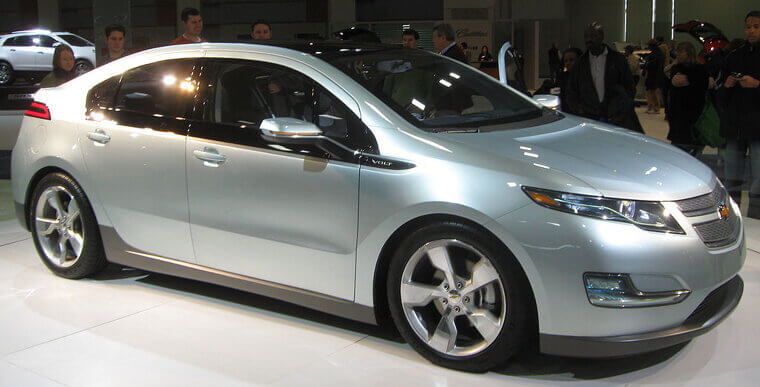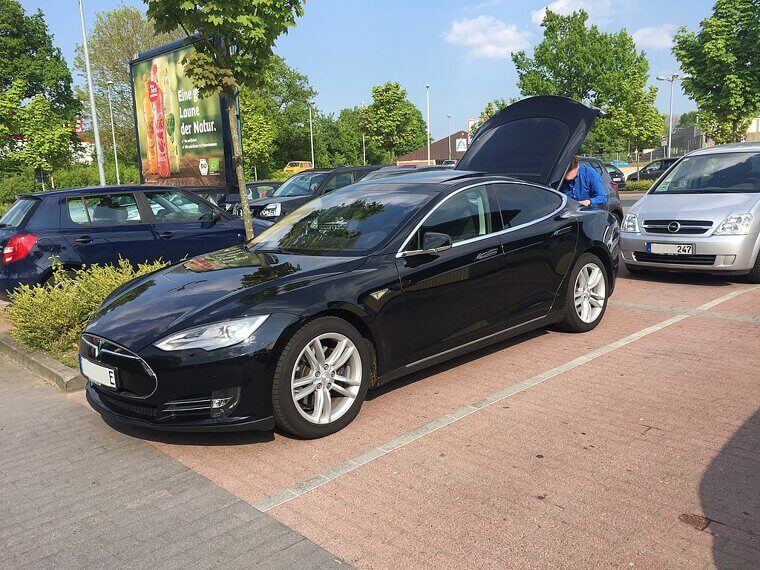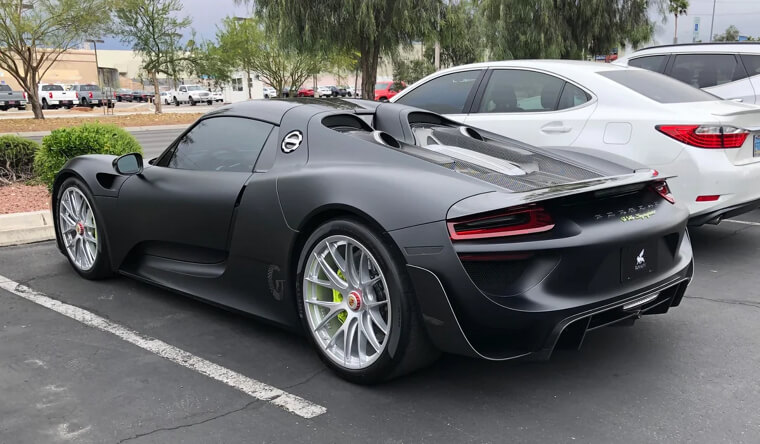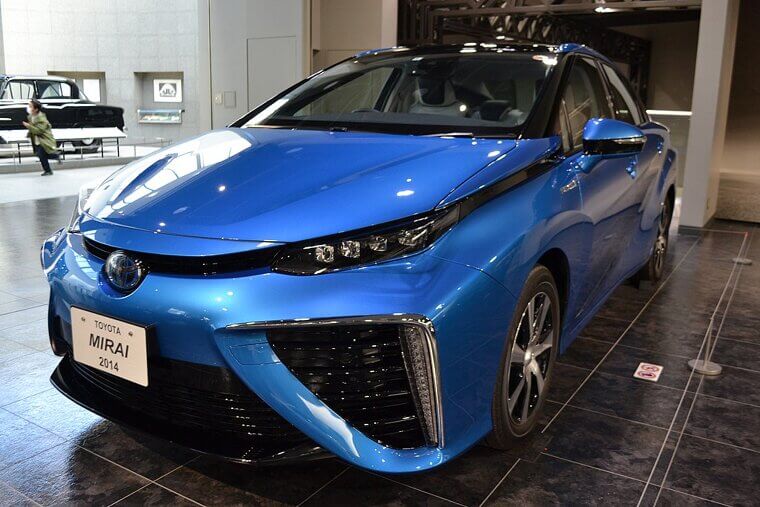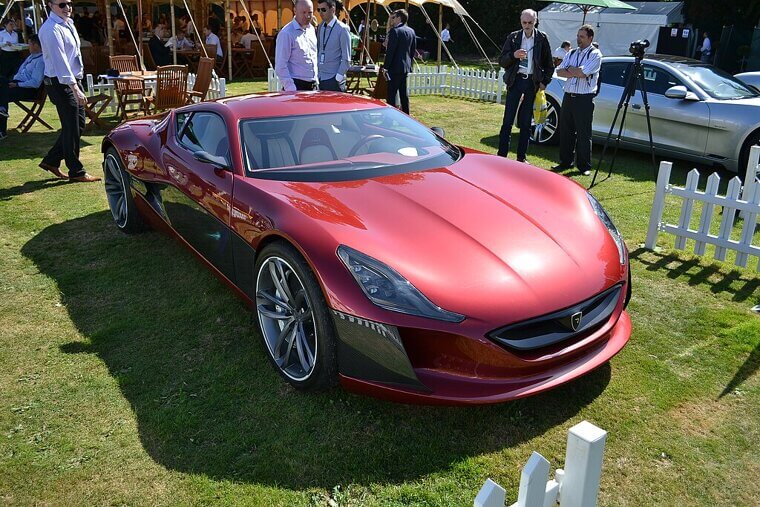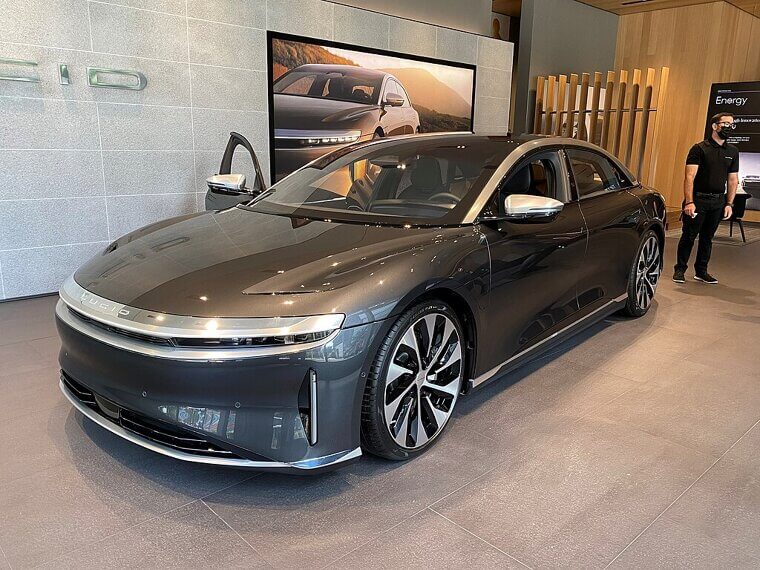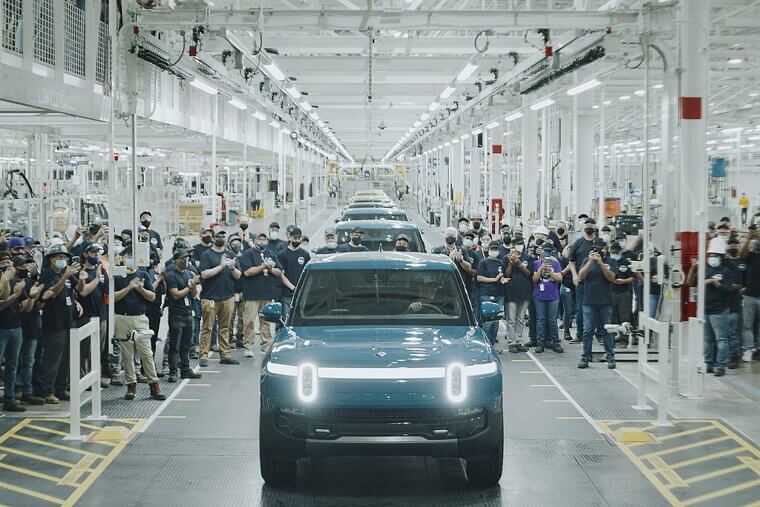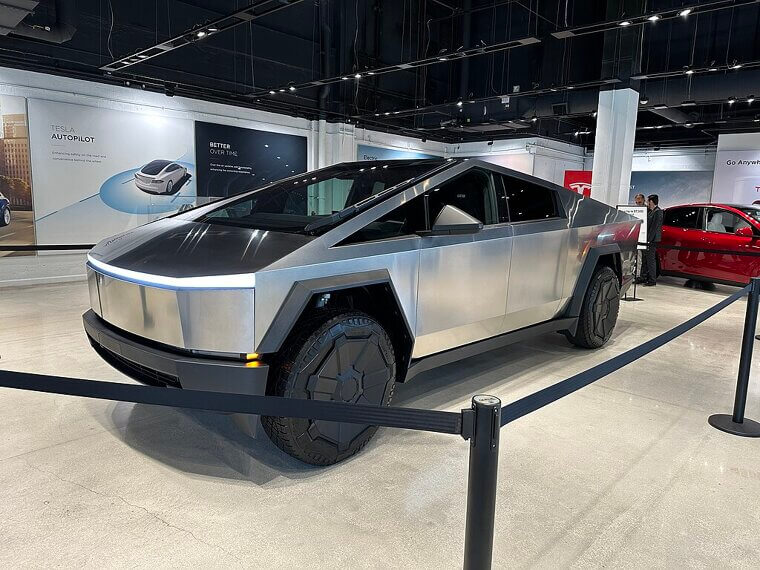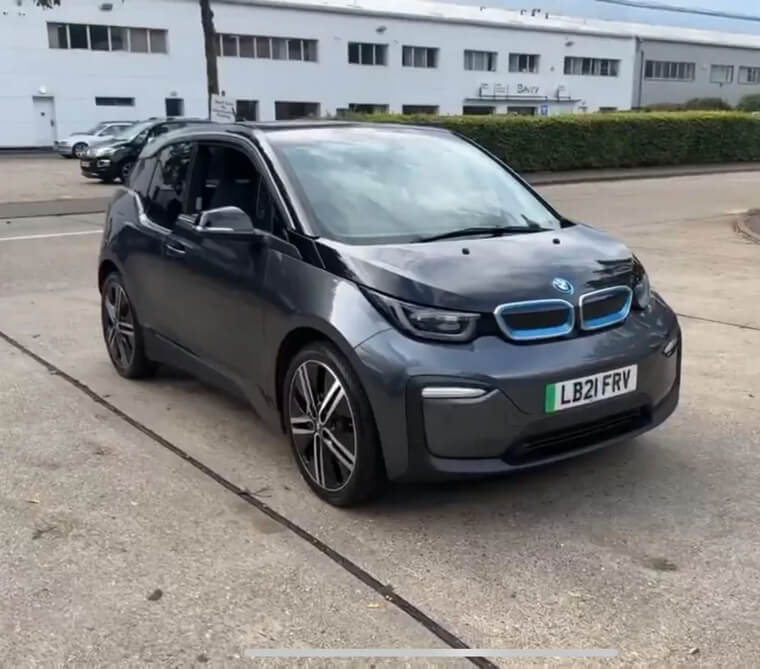Tesla Roadster (2008)
Tesla’s Roadster proved electric cars could thrill, not just whisper. Lightning-quick acceleration, zero emissions, and a sleek, futuristic design made skeptics eat dust. It wasn’t just a sports car - it was a manifesto on wheels.
Ford Model T (1908)
The Model T didn’t just put America on wheels - it invented the commute! Henry Ford’s affordable tin chariot turned dusty roads into the arteries of modern life. Built on the revolutionary assembly line, it was the everyman’s passport to freedom. It rattled like a toolbox, but it changed civilization.
Cadillac Type 53 (1916)
This beauty quietly rewired history by introducing the modern control layout: clutch, brake, and throttle in their familiar places. Previously, driving meant wrestling with levers like a confused octopus. The Type 53 turned chaos into coherence; elegance in engineering form, giving future drivers something predictable beneath their hands.
Volkswagen Beetle (1938)
Love it or loathe it, the Beetle was the people’s car: simple, round, and stubbornly cheerful. Designed to be easy to fix with a butter knife and a good attitude, it carried generations through revolutions and road trips alike. Its air-cooled heart and smiling face made it personality on wheels.
Tucker 48 (1948)
Preston Tucker’s dream car was a comet that burned too bright. With its rear engine, safety windshield, and swiveling center headlight, the Tucker 48 was decades ahead of its time. Unfortunately, innovation scared the wrong people and Detroit’s giants crushed it under bureaucracy.
Citroën DS (1955)
The DS looked like it had flown in from Mars. Hydropneumatic suspension, power steering, and brakes that felt like sorcery made it a time traveler among earthbound sedans. It didn’t just glide - it hovered. No wonder the French president trusted it to save his life during an assassination attempt.
Chevrolet Corvette (1953)
America’s first proper sports car strutted out like a movie star in fiberglass. The Corvette blended sleek European flair with good ol’ American horsepower. It wasn’t perfect (its early six-cylinder whimpered more than roared), but it laid the foundation for a legacy that’s been burning rubber ever since.
Mini Cooper (1959)
Born from a fuel crisis, the Mini didn’t just shrink the car; it revolutionized it. Front-wheel drive, transverse engine, and go-kart handling made it a rebel in a tiny package. It cornered like a caffeinated squirrel and became a British icon.
Jaguar E-Type (1961)
The E-Type didn’t just turn heads - it stopped time. Enzo Ferrari himself called it “the most beautiful car ever made,” and he wasn’t wrong. Sleek, predatory curves hid a brutal straight-six beneath. It was fast, it was feline, and it turned the dullest road into a divine runway.
Ford Mustang (1964)
Affordable, stylish, and itching for a drag race, the Mustang made rebellion mainstream. It birthed the pony car, a breed defined by muscle and mischief. Teenagers worshiped it, executives envied it, and Hollywood made it immortal.
Lamborghini Miura (1966)
The Miura was pure Italian drama - a symphony of noise, speed, and danger. Its mid-engine layout revolutionized supercar design, and its looks could melt glaciers. Built by rebellious young engineers in secret, it proved that passion could outrun caution.
NSU Ro80 (1967)
The Ro80 was the rotary revolution on four wheels, a futuristic wedge slicing through 1960s conservatism. Its engine hummed like a science experiment, smooth and almost alien. Radical design met engineering ambition, though its reliability suffered. Still, the Ro80 remains a testament to daring.
Datsun 240Z (1969)
Japan arrived in style with the 240Z, a sports car that married beauty, performance, and affordability. Sleek lines concealed a surprisingly potent engine, making enthusiasts feel like they’d stolen a supercar on a budget. The 240Z didn’t just compete with European titans; for many, it outshone them.
DeLorean DMC-12 (1981)
Stainless steel skin, gull-wing doors, and a name forever tied to time travel. What’s not to love? The DeLorean looked like a spaceship parked on Earth, with style that outweighed practicality. Its underpowered engine couldn’t match the drama of its appearance, yet it became an icon, nevertheless.
Audi Quattro (1980)
All-wheel drive, turbocharged firepower, and a rally pedigree - Audi’s Quattro changed traction forever. It could claw up snow, tear through gravel, and still hug asphalt with the poise of a predator. Drivers felt invincible, engineers triumphant, and competitors terrified. The Quattro wasn’t just a car - it was the earth’s grip reinvented.
Chrysler Minivan (1984)
The minivan wasn’t glamorous, but it reshaped family life forever. With sliding doors, modular seating, and room for enough groceries to feed a small army, it made suburban chaos tolerable. Chrysler’s creation made “dad van” a badge of honor, proving that innovation doesn’t have to roar.
BMW 3 Series (E30, 1982)
The E30 turned compact luxury into a global obsession. Balanced chassis, crisp handling, and understated elegance made it the driver’s favorite. It could seduce commuters and racers alike, bridging practicality with excitement. The E30 wasn’t just a car - it was the template for decades of sporty sedans.
Toyota MR2 (1984)
Toyota’s little mid-engine wonder brought exotic car thrills to the masses. Light, agile, and cheekily nimble, it cornered like it had secrets to tell. The MR2 was compact chaos wrapped in Japanese reliability; a pocket rocket with a grin.
Mazda MX-5 Miata (1989)
The Miata resurrected the two-seat roadster with contagious joy. Tiny, lightweight, and infinitely playful, it was a car that laughed at physics. Affordable, reliable, and endlessly tunable, the Miata didn’t just bring fun back; it reinvented fun. Drivers around the world discovered that happiness could be measured in revs per minute.
Smart Fortwo (1998)
Tiny but audacious, the Smart Fortwo turned city driving into a game of Tetris. Just two seats, minimal footprint, and shocking maneuverability made it the ultimate urban escape artist. Critics scoffed, drivers smiled. It wasn’t about speed - it was about fitting into spaces no one else could dream of.
McLaren F1 (1992)
The F1 wasn’t just a supercar; it was the apex predator of the ’90s! Central driving seat, carbon fiber construction, and a BMW V12 screaming like a banshee - every detail screamed obsession. It was faster, smarter, and more ambitious than anything else on the planet.
Toyota Prius (1997)
The Prius quietly launched a revolution before “eco-friendly” was trendy. Hybrid technology married efficiency and practicality, creating a car that whispered about the future instead of roaring. It was neither fast nor flashy, but it taught the world that innovation doesn’t always need drama - sometimes it’s about changing habits and emissions.
Honda Insight (1999)
Honda’s Insight was the first mass-market hybrid in the U.S., a whisper of the future. Aerodynamic and featherlight, it prioritized efficiency over flair, sporting a CVT and early hybrid tech. It hinted at a world where cars could think ahead, even if drivers weren’t ready.
Toyota RAV4 EV (1997 / 2012 Relaunch)
The RAV4 EV turned the SUV world upside-down - it was electric, quiet, and surprisingly fun. Early adopters experienced range anxiety before it was trendy, yet it proved EVs could be practical without being dull. When relaunched in 2012, it quietly reminded the world that the future of utility was shockingly green.
Bugatti Veyron (2005)
The Veyron is excess distilled into perfection: 1,001 horsepower, 16-cylinder madness, and top speeds that made the planet spin faster. Luxury and engineering collided in a symphony of carbon fiber and madness. It didn’t just move fast; it redefined fast.
Nissan Leaf (2010)
Affordable, practical, and silent, the Leaf offered a guilt-free commute with surprisingly pleasant handling. It didn’t boast supercar speed, but it boasted something better: accessibility. For many, the Leaf was the first EV they could actually live with, quietly reshaping expectations for what electric mobility could achieve.
Chevrolet Volt (2010)
The Volt bridged worlds: electric efficiency with gas-powered reassurance. Its plug-in hybrid tech made range anxiety optional, while clever engineering proved innovation could be practical. Sleek and unassuming, it quietly carved a niche for forward-thinking commuters.
Tesla Model S (2012)
The Model S redefined the electric sedan: lightning-fast, tech-laden, and utterly desirable. Ludicrous Mode turned electric efficiency into adrenaline, while its minimalist interior looked like a spaceship lounge. It wasn’t just a car - it was a statement.
Porsche 918 Spyder (2013)
The 918 Spyder married hybrid tech with supercar insanity. Plug-in power met track-ready precision, with a V8 and electric motors dancing together flawlessly. It was fast, flashy, and frighteningly clever, proving that eco-conscious could still thrill. In short: the 918 was a brilliant mind wrapped in curves and carbon fiber.
Toyota Mirai (2014)
The Mirai quietly whispered “hydrogen future” while most cars shouted petrol. Sleek and futuristic, it turned chemical magic into motion, emitting only water as proof. It wasn’t about speed or flash; it was a manifesto on sustainability, a glimpse at a world where refueling didn’t cost the planet.
Rimac Concept One (2016)
Rimac’s Concept One was electric hypercar insanity wrapped in Croatian flair. Over 1,000 horsepower, all-wheel torque vectoring, and a 0-60 time that felt like cheating physics. It wasn’t just fast; it was terrifyingly precise, a digital symphony of innovation.
Lucid Air (2021)
Lucid Air redefined EV luxury with aerodynamic elegance and range that could make gas cars blush. Tech-laden, silent, and absurdly quick, it blends comfort, performance, and smarts effortlessly. More than a car, it’s a rolling argument: EVs can be seductive, capable, and aspirational all at once.
Rivian R1T (2021)
Rivian’s electric pickup arrived like a green thunderclap. Rugged yet refined, it proved adventure didn’t need fossil fuels. Quad-motor torque, clever storage, and off-road brains made it a beast for explorers. It’s less about commuting and more about rewriting the rules of outdoor mobility.
Tesla Cybertruck (2023)
The Cybertruck broke all the design rules and then some. Stainless steel, angular geometry, and bulletproof bravado make it part sci-fi, part utility. Critics laughed; fans drooled. Beyond looks, its EV powertrain and tech-laden interior scream the future of trucks is here. Or so they say.
BMW I3 (2013)
The i3 screamed “futuristic city car” without trying too hard. Carbon fiber cabin, electric drivetrain, and an angular personality made it unmistakable. It was compact, quirky, and unapologetically innovative - an urban companion that encouraged sustainability without guilt trips.

